New Nuclear Now - Issue 002
Innovation, Insight, and Impact.
Welcome to the second issue of New Nuclear Now
The nuclear conversation is getting louder and more urgent.
As global energy demand rises and the race to net zero intensifies, nuclear is stepping into the spotlight as a reliable, scalable, and essential solution.
In this issue, we share the stories, technologies, and people driving change. From industry headlines to the promise of Small Modular Reactors, we explore the breakthroughs shaping the sector’s future.
We also spotlight Dr Tim Gregory, nuclear chemist, broadcaster, and author of Going Nuclear. In our latest podcast, Gregory makes a provocative case: nuclear power isn’t just part of the answer, it’s the only viable route to a sustainable energy future.
Here’s what you can expect in every issue of New Nuclear Now:
- Five Key News Headlines: Major developments in nuclear energy for 2025
- Interview: Insight conversations with industry leaders (This issue: Dr Tim Gregory)
At PACE, staying ahead isn’t just about keeping up, it’s about leading the way. We’re excited to share this journey with you.
Let’s dive in.
In Conversation: Dr Tim Gregory on Nuclear’s Role in a Net Zero Future
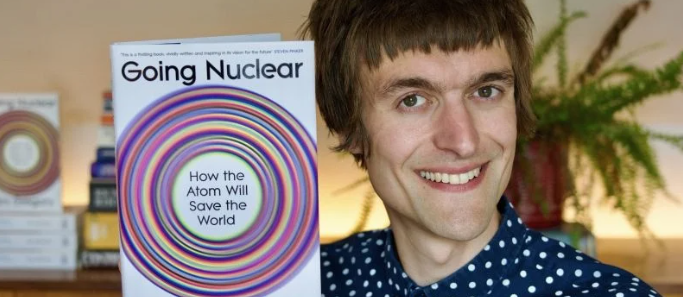
About Dr Tim Gregory
Dr Tim Gregory is a nuclear chemist at the UK’s National Nuclear Laboratory, where he works on the analysis of radioactive materials. He first came to public attention as a finalist on the BBC’s Astronauts: Do You Have What It Takes? and has since become a familiar voice on science, appearing on The Sky at Night and BBC Breakfast. In 2025, he published Going Nuclear, How the Atom Will Save the World, making the case for nuclear energy as central to achieving net zero, powering future technologies, and unlocking innovations in medicine, agriculture, and space exploration.
Q: Why did you decide to write Going Nuclear? What impact are hoping it will have on public understanding?
Tim:
“When I looked at the climate change bookshelves, nuclear was either absent or casually dismissed. Yet for the technology that is absolutely fundamental to a fossil-free future, barely anyone was talking about it. That struck me as a huge disservice to humanity.”
“Nuclear has to be part of the solution – not only if we’re to achieve net zero by 2050, but also if we want to grow economies, raise living standards, eliminate poverty, and power the technologies of the future such as AI. But it’s not just power generation – I write about nuclear medicine, forensics, even how nuclear science helps us explore the solar system. It touches so many aspects of the modern world, and it raises our aspirations of what’s possible.”
Q: In your book you say, "Climate change is not an environmental challenge." What do you mean by that?
Tim:
“Climate change is largely a consequence of our energy systems. If you solve the energy problem, the environmental problem sorts itself out.”
“I also wanted to appeal to those who might not be especially concerned about climate change. There’s a strong economic and humanitarian case for nuclear too – societies need energy abundance in order to flourish. Nuclear delivers that. It’s win–win: those focused on the environment get what they want, and those focused on economic growth get what they want too.”
Q: What misconception about nuclear energy frustrate you the most?
Tim:
"Probably the one I hear most often is that nuclear takes too long. It’s simply not true. Back in the 1970s and ’80s, France built 55 nuclear reactors in 25 years, supplying 80% of its electricity. They almost decarbonised their grid by accident, long before anyone was even talking seriously about climate change.”
“If we look at South Korea and China today, their build times are about as fast – or even faster – than Europe’s were a few decades ago. The idea that nuclear takes too long is really just a symptom of us being out of practice in Europe and North America. The science, the technology, the engineering is there – we just need to get better at doing it again.”
Q: Why has nuclear faced so much resistance compared to wind and solar?
Tim:
“Safety is a big part of it. There’s a misconception that nuclear is dangerous and reckless. It’s simply not true. More people die every few hours from fossil fuel air pollution than have ever died from nuclear power. Measured per unit of electricity produced, nuclear is as safe as wind and solar. Splitting atoms is one of the safest things humanity does – it’s far safer than setting things on fire.”
“The other factor is perception. Over the last 20–25 years, the wind and solar industries have done a fantastic job of presenting themselves as the answers to climate change. And they absolutely will be part of the solution – I don’t want to live in a world without wind turbines and solar panels. But the nuclear industry hasn’t been as confident in advocating for itself, despite the fact that even today, Europe’s largest single source of clean power is nuclear energy built decades ago. Just think what’s possible now, with the motivation to cut fossil fuels.”
Q: Looking ahead, what excites you most about new nuclear technologies?
Tim:
“Probably Small Modular Reactors. There are already more than a hundred designs, from tiny one-megawatt units that could fit inside a shipping container to larger 500-megawatt designs on the footprint of a couple of tennis courts.”
“What excites me is the modular part – being able to build most of the power station on a factory line. Mass production always drives down cost and build time, and you could locate SMRs exactly where they’re needed. That means not just electricity but also clean heat for industry – steel plants, chemical works, paper mills – anywhere that needs reliable power and high temperatures. Once people see them being rolled out, they’ll realise they’re no big deal. Over time, I think we’ll see them everywhere.”
Q: How important will reliable nuclear power become as society electrifies and demand keeps rising?
Tim:
“Right now, if there’s a power cut, I can jump in my petrol car or light my gas hob. But when everything is electrified, we won’t have those fallbacks. Our dependence on reliable electricity is already huge—and it’s only going to grow.
“As lovely as wind and solar are, they can’t provide the 24/7 reliability that society needs – not just to maintain our standards of living, but to improve them. Future generations should inherit a world that’s better than the one we have today, and that takes abundant, clean power.”
“I’d actually love energy to become boring – just something cheap, reliable, and in the background. Then we can focus on the exciting stuff: the technologies that abundant electricity makes possible, from AI to innovations we haven’t even imagined yet.”

Key Nuclear Energy Development in 2025 So Far
In this section, we highlight some of the most impactful nuclear energy stories emerging this year. From South Korea’s bold plans for new reactors and SMRs to advancements in microreactor technology and regulatory shifts in the U.S., these developments are shaping the future of nuclear power. We take a closer look at the investments, innovations, and strategic moves that are setting the stage for the next wave of nuclear energy solutions, with global implications for supply chains, workforce needs, and clean energy goals.
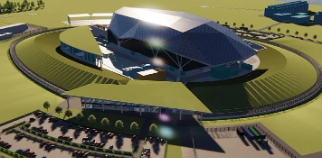
Rolls-Royce SMR Selected as Preferred Bidder by GNN (UK)
A landmark win for Rolls-Royce SMR, officially chosen by Great British Nuclear as the preferred bidder in the UK’s SMR deployment programme. This sets the stage for factory-built reactors to form the backbone of Britain’s future energy mix, creating thousands of skilled jobs and driving supply chain growth across the Midlands and North. A major step forward in turning policy into delivery.
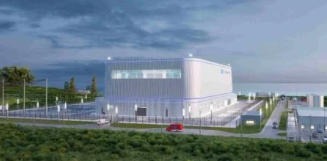
GE Vernova Gets Green Light to Start Building Darlington SMR (Canada)
GE Hitachi’s BWRX-300 SMR project at Ontario Power Generation’s Darlington site received construction licence approval from the Canadian Nuclear Safety Commission—the first of its kind in North America. Construction is now underway, with full operation expected by 2029. This is a major validation of GE’s reactor design, and a signal to other nations that SMRs are crossing from concept to concrete.
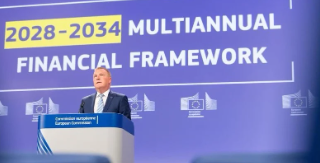
EU Proposes Nuclear Funding in 2028-3034 Budget Framework (EU)
The European Commission has proposed earmarking dedicated nuclear funding in its €1.9 trillion budget plan for 2028–2034. It’s a potential turning point for next-gen nuclear in Europe, with SMRs, advanced reactors and fuel security now back on the energy agenda. The proposal is still under negotiation—but the shift in tone is clear: nuclear is strategic again.
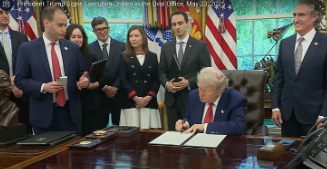
Trump Sets Goal to Quadruple US Nuclear Capacity by 2050 (USA)
In a sweeping executive policy framework, the Trump campaign outlined a goal to quadruple US nuclear capacity by mid-century. The plan focuses on SMRs, private investment, and streamlined approvals, positioning nuclear as the cornerstone of US energy security and industrial competitiveness. While details are scarce, the political signal is strong—and investors are watching.
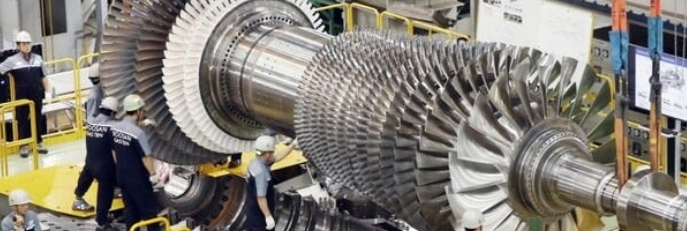
Doosan Enerbility to Invest ₩1.3 Trillion in Gas Turbine & SMR Expansion (South Korea)
Doosan Enerbility, a key nuclear supply chain player, announced a huge investment in expanding both gas turbine production and SMR component manufacturing. The move underlines South Korea’s ambitions to lead in global SMR exports, while reinforcing domestic capability. Doosan’s ramp-up will support multiple SMR developers and increase pressure on Western OEMs to scale up.
Conclusion
The conversation with Dr Tim Gregory highlights both the urgency and the opportunity ahead for nuclear. From Small Modular Reactors to new applications in industry and medicine, nuclear has the potential to transform not just how we power our world, but how we live within it.
Realising that potential will depend on:
Bold government leadership
Smarter, faster regulation
Innovation and collaboration across the sector
A skilled and diverse workforce ready to deliver
At PACE, we’re focused on that last point—building the talent pipelines that will underpin the industry’s growth. Whether through inspiring the next generation or bringing in expertise from other sectors, we are committed to helping nuclear meet the challenges of today and the opportunities of tomorrow.
If you’d like to explore how we can support your hiring strategy for 2025 and beyond, we’d love to hear from you.
Antony Harding
Sales Director
antony@pace-people.com
+44(0) 203 8543 166
- About us
- Job search
- Join us
- Upload CV
- Hiring Brief
- Register
- Contact us
- Login
- Privacy policy
- +44 203 854 3160
- info@pace-people.com
- Suite 2‑01, Huddle Wimbledon, Wimbledon Quarter, 4 Queens Road, London, SW19 8ND.
Built by huzzah!

